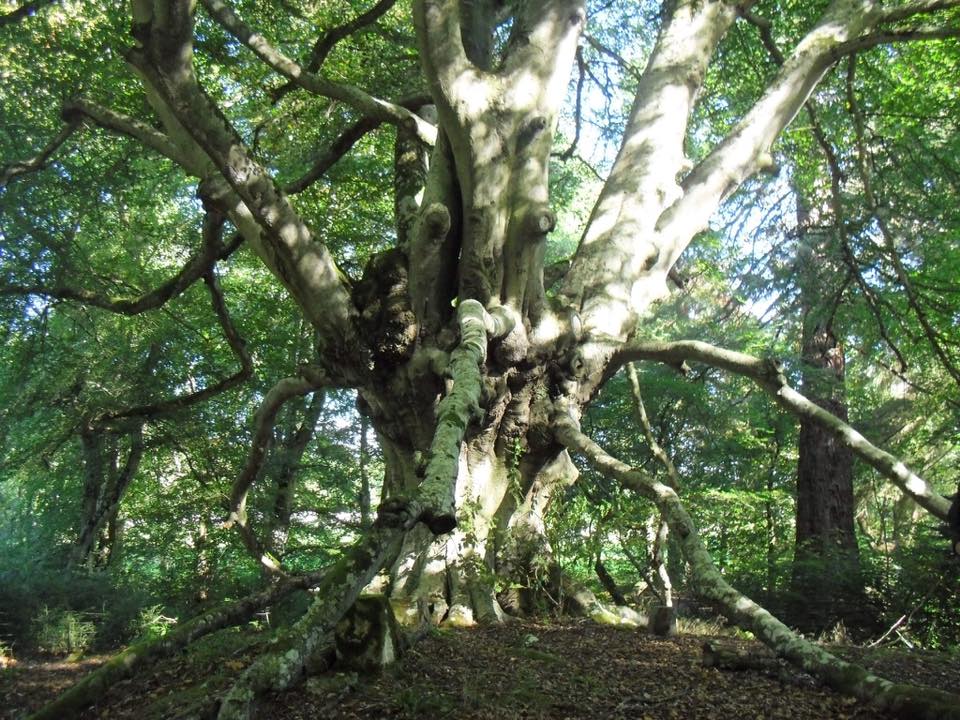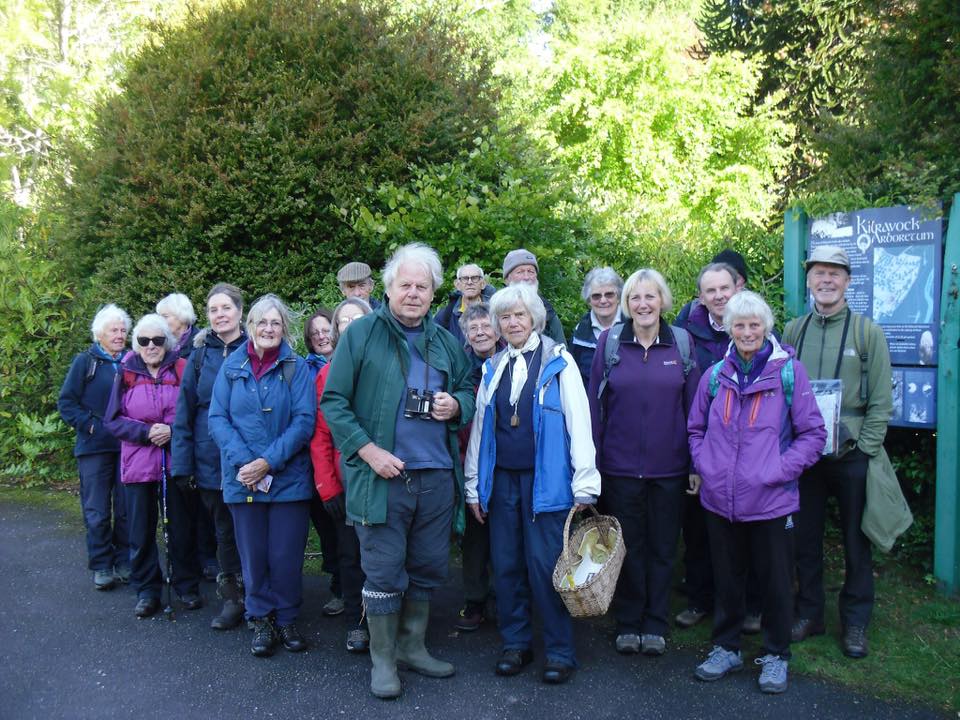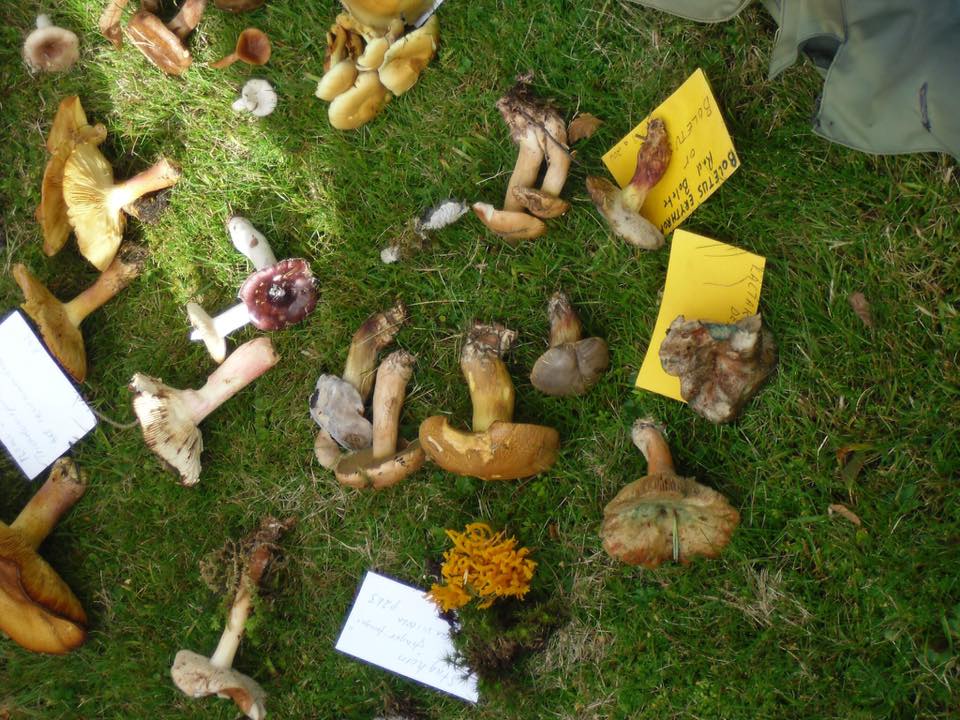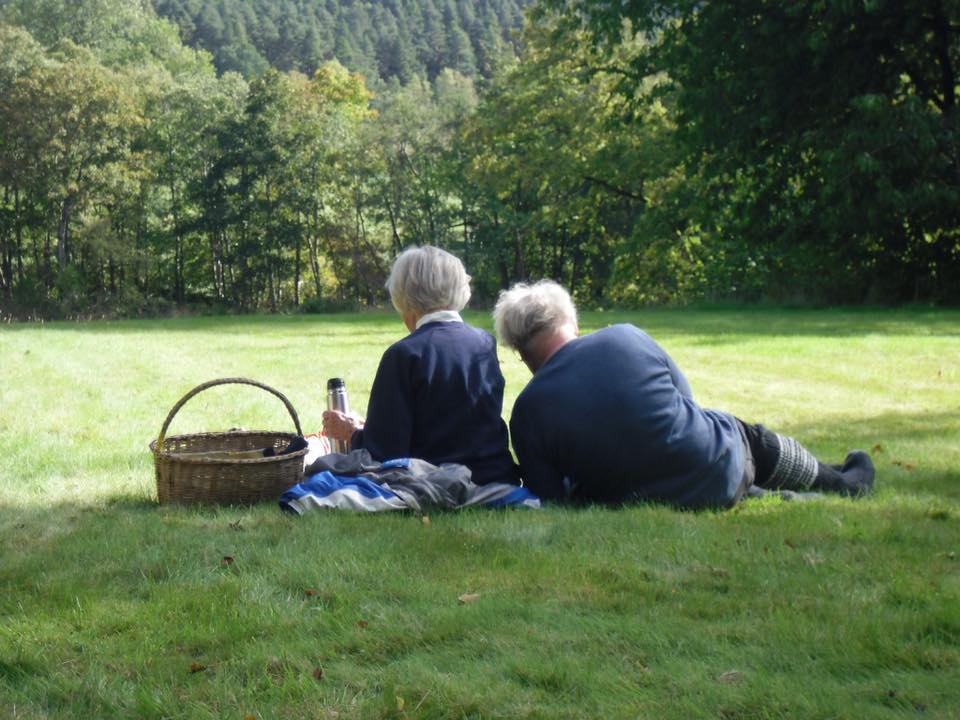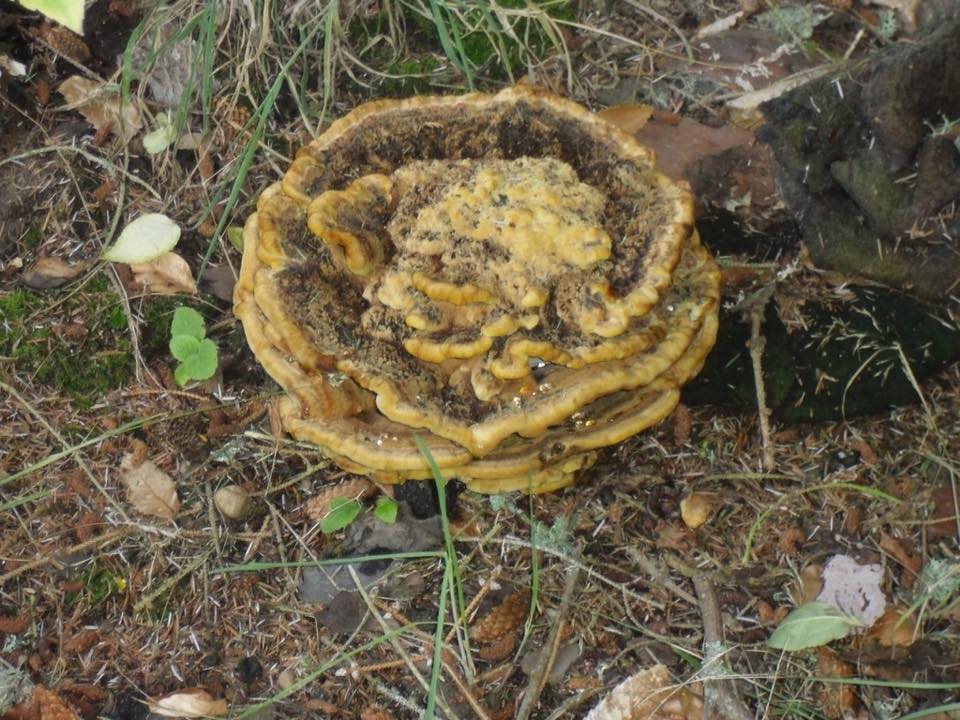This Field Club walk was on Saturday, 22nd September, when Kerstin Keillar and John Miller led their annual exploration of trees and fungi, this time on the Kilravock Estate near the village of Croy, halfway between Nairn and Inverness. Kilravock Castle is the family seat of the Rose family, who had been in residence since 1293 until the death of Elizabeth Rose in 2012. The present castle dates from 1460. It is no longer open to the public. Feedback is that it was a great success with 18 attending. Thanks to John Miller and Kerstin for their help
The origins of a settlement at Kilravock (pronounced Kilrawk) are thought to be from the 6th century when St. Columba arrived in this area as a missionary.’Kil’ is the Celtic word for church, the remains of which are thought to be in the area of the dovecote.
The estate is the seat of Clan Rose whose origins came from Mary Boscoe who married Hugo II de Ros in 1290. He came to England with William the Conqueror’s brother and originated from Ros, near Caen, in Normandy. The first six generations of the Rose family are thought to have had a stone and wood dwelling near the top of the hill by the cedar of lebanon.
The castle at Kilravock was built in a period of lawlessness around the same time as Rait, Cawdor and Daviot, the license obtained in 1460, with building starting soon after. The architect is thought to be Cochran, who worked for James III, and also designed Cawdor Castle. The same mason’s marks are on both castles.
The mansion house was added in 1553 by 10th baron accommodate 17 female relations, daughters and sisters. The main stair cases, corridors and west wing were added during 18th century and the scullery and pantry in 1926.
In May 1967 the castle opened its doors as a Christian centre and a trust was formed in 1971. In 1984 Elizabeth Rose, 25th baroness gave the castle and its surrounds to the ownership of the Kilravock Christian Trust. Elizabeth Rose died 9th December 2012 aged 88. The first tree we were shown was a 300 year old layered beech, just outside the arboretum. This tree is fabled to have romantic roots. The story goes that an early landowner was caught with a housemaid under this tree and since then generations of lovers have carved their initials into the bark.
As we entered the arboretum we had the magnificent sight of a monkey puzzle tree in flower (araucaria araucana) thought to be about 120 years old. Several other specimens of around the same age were found including a beautiful Sitka spruce (picea sitchensis), a real surprise that it could look so impressive. We also discovered differing smells of some trees such as the pineapple aroma of the western red cedar(thuja plicata).
Our rarest tree was the japanese white pine(pinus parviflora) which retains its cones for several years.
We did manage to collect some fungi, mostly inedible species, but due to the lack of recent rain, our collection was fairly small but was added to by those that Kerstin had found the previous day in the oak wood.
It was a really stimulating and interesting meeting that was enjoyed by all present.

